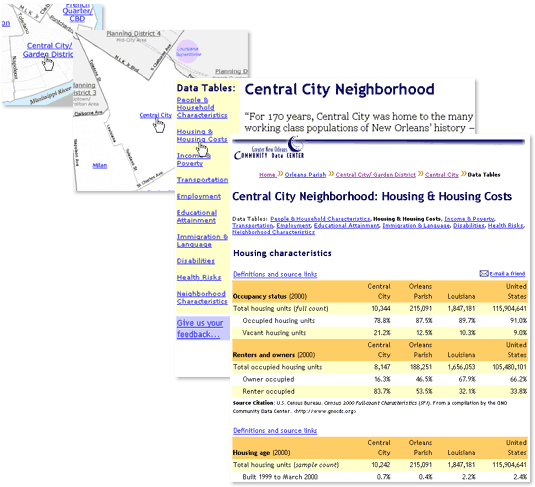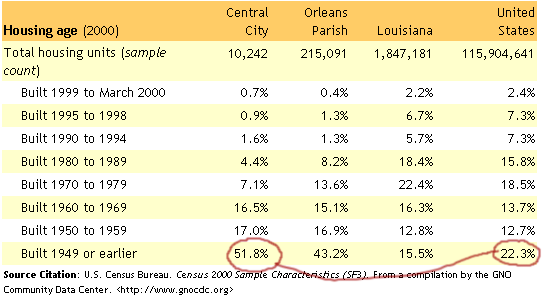![]()
Home
![]() Lead
Poisoning Case Study
Lead
Poisoning Case Study
6. Looking for data
Back in the computer lab, Mrs. Bell went right to the CDC web site. She figured they’d have some data about the number of kids with lead poisoning in her neighborhood. But after several hours of clicking and reading, Mrs. Bell didn’t find any numbers about lead poisoning.
|
What is a risk factor? A risk factor is anything that increases risk for developing a disease or problem. It does not mean that it causes the problem. In lead poisoning, for example, children living in poverty are at higher risk because the buildings in which they live are more likely to have peeling paint. Poverty is a risk factor, but everybody knows that being poor doesn't cause lead poisoning. |
|
She found a lot of good information about how to conduct a neighborhood-based lead poisoning program, but no data about the problem. But what the web site did say was that there were several things that would indicate that a neighborhood had a higher risk of lead poisoning. A lot of houses built before 1946 was a big risk factor. And Mrs. Bell knew her neighborhood had lots of those.
That weekend, Mrs. Bell went to the public library to find out what kind of information they might have on the numbers of older houses in her neighborhood. To Mrs. Bell’s surprise, the librarian seemed quite pleased by the question.
“Sometimes folks want data that really isn't available. But older houses is an easy one. The US Census collects information about the year each housing unit was built.”
“Oh good," said Ida. "I looked for numbers of kids with lead poisoning everywhere. But I didn't find it.”
“That’s
right,” explained the librarian. “Some data isn’t regularly
collected or it’s not reported at the neighborhood level. The Census
is the best source of data at the neighborhood level. So it’s always
a good place to start for data on income, employment, housing, etc.”
“Let’s go to our computer lab. Have you seen the Data Center’s website? They've got Census data organized by neighborhood in Orleans Parish.”
Mrs. Bell went to www.gnocdc.org and, looking at the street maps, she saw that where she lives is considered part of Central City. She clicked on that neighborhood and found a link to housing data for Central City.

On that Housing
page, Mrs. Bell found the numbers she was looking for.

Yes, sir. They sure had a lot of older houses in her neighborhood.
She gathered comparison data at the parish, state and national level, so she could convince a funder that her neighborhood really needed money for lead-poisoning prevention.
![]() Next page: “Think like a funder”
Next page: “Think like a funder”
1, 2, 3,
4, 5, 6, 7,
8, 9, 10
Home
![]() Lead
Poisoning Case Study
Lead
Poisoning Case Study
![]()
|
Greater New Orleans Community Data Center
Last modified: February 25, 2003 |